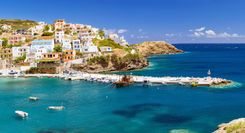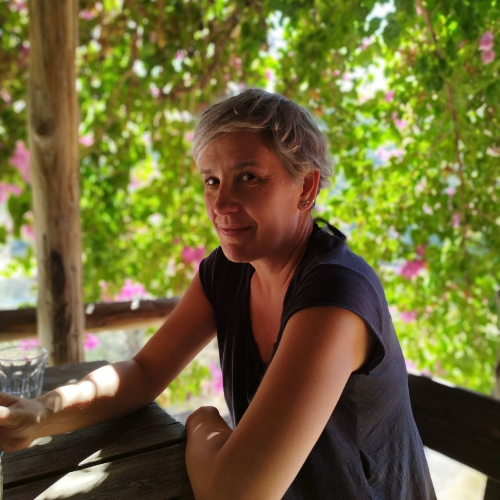10. Náxos: the happiest of Greek islands
Náxos is the largest – and arguably the most self-sufficient – of the Cyclades. Green, mountainous, and fertile, it stands out from its more barren neighbors. In fact, the island could easily survive without tourists, thanks to its production of potatoes, olives, cheese, lemons, and grapes. But tourism has landed here in full force – parts of Náxos now buzz almost as much as Páros during the peak months.
Still, the island offers plenty beyond the beach resorts. Hike into the central valleys, climb the Cyclades’ highest peak, or explore the wild north coast. The southwest shoreline is where you’ll find long, sandy beaches and warm, shallow waters – ideal for families or anyone craving a proper beach day. Local products shine here too: look for the island’s cheese and wines, or try kítron, a sweet liqueur distilled from citrus leaves and sold in green, yellow, or clear versions depending on how strong and sugary you want it.
As you sail into Náxos Town, the kástro – a fortified Venetian district – towers above the waterfront. The port may seem like the center of everything, but dig deeper. Náxos Town is laced with narrow alleys and arched passageways climbing through the Boúrgos old quarter up to the kástro. South of the port, the town spreads around Platía Evripéous, where tavernas, cafés, and local shops hum late into the night.
How to get to Náxos
- By ferry: Regular ferries run from Athens (Piraeus and Rafina) and other Cycladic islands – about 4-6 hours depending on the route.
- By plane: Náxos has a small airport with daily flights from Athens (40 minutes).
When to visit Náxos
- Best time: June and September – warm weather, fewer crowds, and the sea’s still perfect for swimming.
- Avoid: August if you want peace – it’s one of the Cyclades’ busiest months.






















